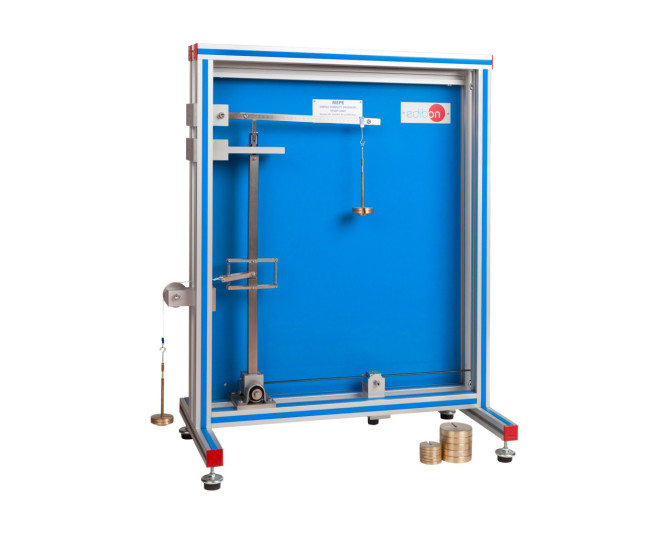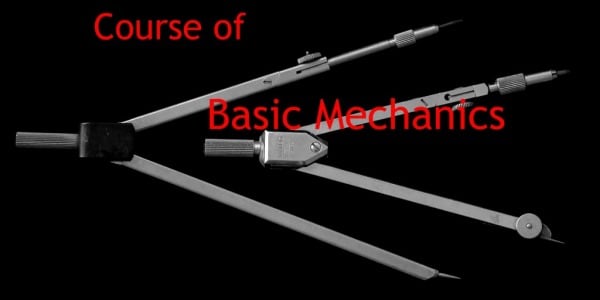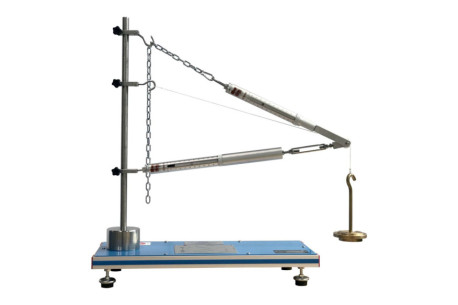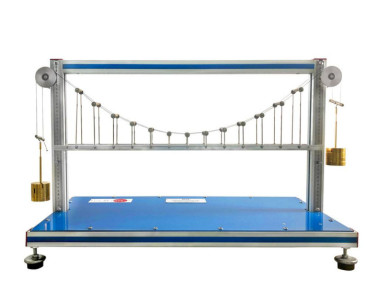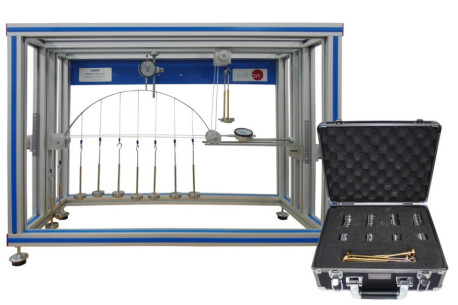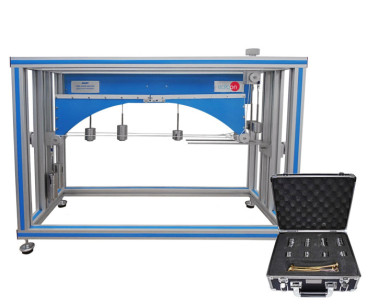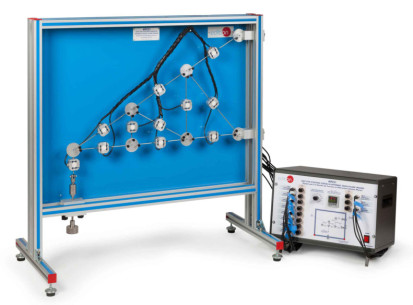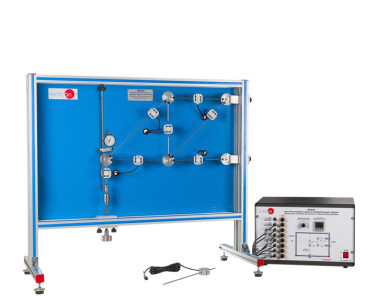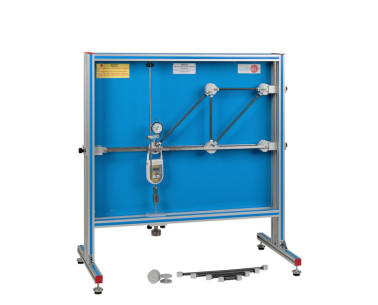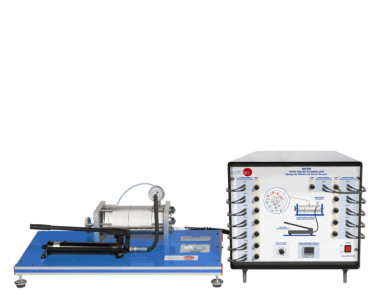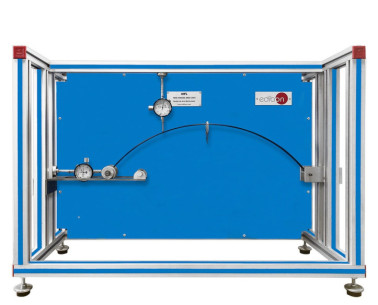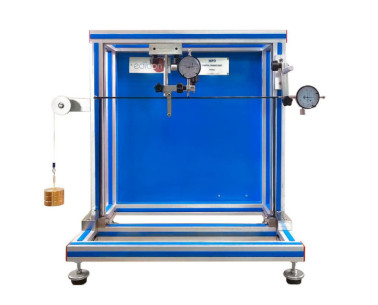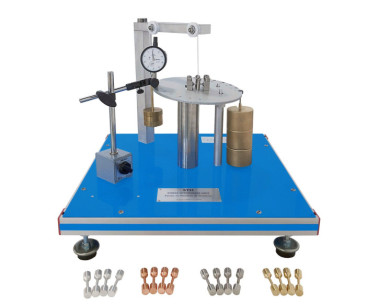The Simple Stability Problems Study Unit, "MEPE", has been designed by EDIBON to study the stability of a bar subjected to buckling by obtaining the critical load in different configurations.
The unit consists of two bars of same length connected by a central low friction joint.
The upper bar is coupled to the fixed system by a movable jointed support. The lower bar is coupled to the fixed system by a fixed jointed support, which can be configured to study an elastic clamp by fixing a sheet made of steel supported at its two ends that acts as torsional spring.
Two springs may be added to the central joint that couples both bars to study an elastic joint. The assembly performs a torque, being equivalent to a torsional spring.
Besides, the unit includes a system to apply a lateral force, which allows to study its effect on the critical buckling load. That system consists of a cable and a mass, which generates a transverse force with respect to the joint in the buckling bar.
The compression load applied to the buckling bar can be continuously varied in all the practical exercises. Thus, the critical value of the load may be calculated more accurately. This system consists of a bar on which masses are applied. The force is transferred to the bar and can be measured with a millimeter ruler.
 クッキーの設定
クッキーの設定

